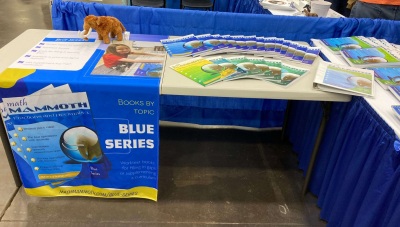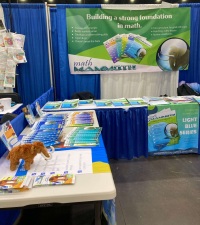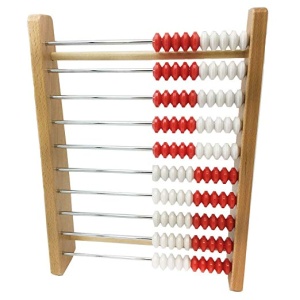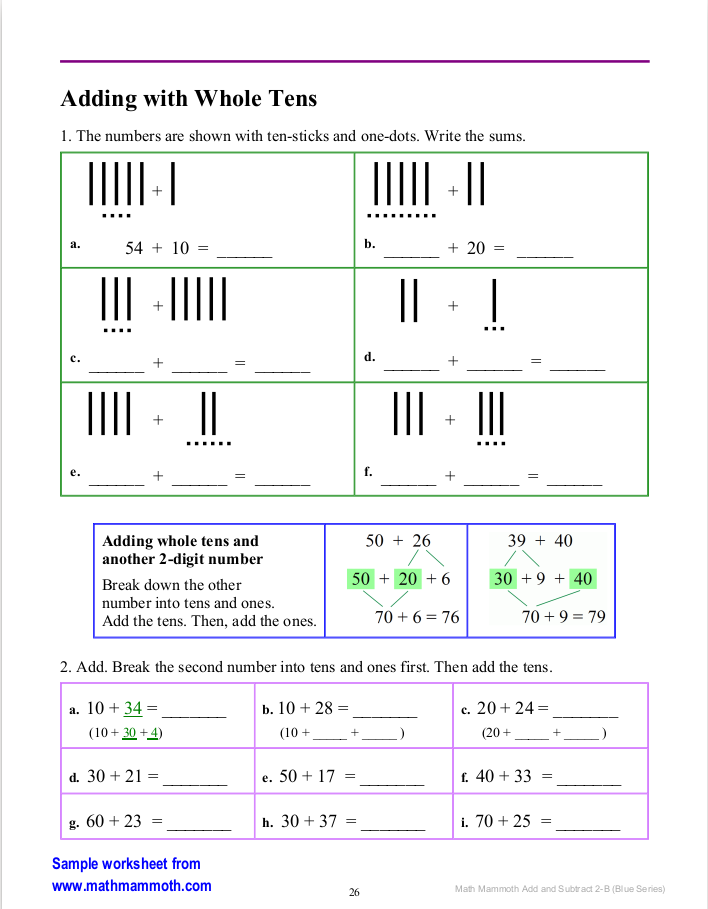
Hello, and welcome to the April edition of the newsletter! |
2. Do you need to use manipulatives with Math Mammoth?For the most part, Math Mammoth curriculum does not specifically emphasize manipulatives, but it uses visual models a lot. The exercises that use visual models can be done with manipulatives instead (counters, base ten blocks, fraction manipulatives, etc.), if you prefer.The exception is the 100-bead abacus, which is used in first grade in teaching place value and numbers up to 100. On each of these pages you will see a list of needed manipulatives and tools for grades 1-3. Most of them are measurement tools. I might also mention... there is no need to go overboard with manipulatives. This video gives an eye-opening illustration of how excessive manipulative use can lead to problems. The girl solves a 4-digit addition problem by drawing thousand-blocks, hundred-sheets, ten-sticks and one-dots on the board, taking 8 minutes (and getting the wrong answer)! Then she says that at home she has been taught to stack the numbers and add. She solves it that way, too, taking 1 minute (getting the correct answer). And she clearly understands that the stacking method (adding in columns) is way easier and more organized. Here's a tidbit from an actual study. Quoting from an article at Education Week (Studies Find That Use of Learning Toys Can Backfire): In a similar series of experiments at the elementary-school level, the researchers found that children taught to do two-digit subtraction by the traditional written method performed just as well as children who used a commercially available set of manipulatives made up of individual blocks that could be interlocked to form units of 10. Manipulatives are GOOD, used in their rightful place. They are a good starting point, and they help students to understand concepts, initially, on a concrete level. But children should not be taught to rely on them. They need to transfer the concrete play into the abstract afterwards and to learn to make generalizations. That is where the power of mathematics is. Let's say, for example, that you use base ten blocks to illustrate the concept of regrouping in addition. Once the student understands that, they should be able to translate their knowledge into paper-and-pencil work, and to bigger and smaller place values (including decimal addition). Math Mammoth books often instruct concepts with pictures, which essentially take the place of manipulatives. Then the student does exercises that use the same pictorial representation, including having to draw those same visual models to illustrate the problems. After that, the student goes on to the totally abstract representation. Here's an example page from the book Math Mammoth Add & Subtract 2-B. The student first adds using the pictorial model, and then with numbers only. So it's the age-old truth: there is balance in everything. |
3. A beautiful puzzle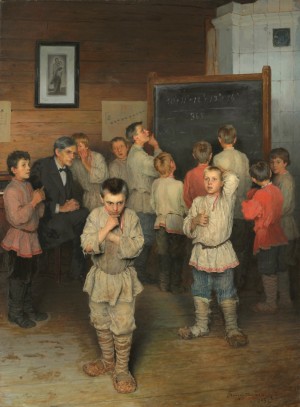 I agree, this is a beautiful math puzzle — looks pretty and is quite solvable by upper elementary students and beyond.
I agree, this is a beautiful math puzzle — looks pretty and is quite solvable by upper elementary students and beyond.
The puzzle on the blackboard is: 102 + 112 + 122 + 132 + 142
365 The painting is by Bogdonay-Belsky, depicting Russian school boys thinking about this mental math exercise. Denise also gives you a hint for solving the squares in the puzzle. |
4. US vs. UKI enjoyed this article... differences between US and British English when it comes to MATH terminology! The author is taking it humorously though sometimes it's a struggle for people who have to switch over from one to the other. :) |
5. Just for fun!
Thanks for reading! 🙂 Feel free to forward this issue to a friend/colleague! Subscribe here. Till next time, Maria Miller |
| Complete curriculum | Math games and interactive practice | Math Mammoth freebies | New to MM? Start here |
| Privacy & your personal data | The Prodigal's Brother | Blue Series: For filling in gaps |
